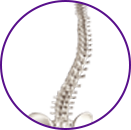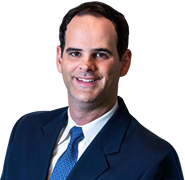Spine Deformities

The Spine or backbone provides stability to the upper part of our body. It helps to hold the body upright. It consists of series of irregularly shaped bones appearing in a straight line. The spine has two gentle curves, when looked from the side and appears to be straight when viewed from the front. When these curves are exaggerated, pronounced problems can occur such as back pain, breathing difficulties, and fatigue. The conditions causing these symptoms include:
Scoliosis: It is a condition where the spine or back bone is curved sideways instead of appearing in a straight line. It curves like an “S” or “C” shape. Larger curves cause discomfort while the small curves do not cause any problems. Treatment for scoliosis is based on the assessment of the curve, cause, and age of the patient. Mild scoliosis (less than 25°) may not require treatment and will be observed by the physician for every 4 to 6 months for any progression in the curve. Bracing may be needed if the curve is more than 30° to help to slow the progression of scoliosis. Surgery is an option for individuals with severe scoliosis (curve>40°) to stop the curve from getting worse. The most common surgical procedure is correction, stabilization and fusion of the curve.
Lordosis: Lordosis is a condition characterized by abnormal excessive curvature of the spine, sometimes called swayback. Treatment for lordosis depends on the severity of the condition, age and any neurological defects if present. In cases of mild lordosis, no treatment may be initiated and your physician would recommend wait and watch approach and observe the curve every 4 to 6 months. If any progression is observed in the curve, treatment may be initiated. Physical therapy (exercise program) may be recommended to increase range of motion, flexibility and strength. Analgesics and anti- inflammatory medications may be prescribed to relieve pain and inflammation. Bracing may be necessary to prevent the curve from worsening. Surgery may be indicated for severe lordosis with neurological involvement.
Kyphosis: Kyphosis is a condition where an abnormal curvature of the spine occurs in the thoracic region resulting in round back appearance. Treatment depends on the cause of the condition and may include bracing, physical therapy, medications and surgery. Bracing may be necessary to prevent the curve from worsening, if the cause of kyphosis is Scheuermann’s disease. Physical therapy (exercise program) may be recommended to increase range of motion, flexibility, and strength. If caused due to osteoporosis, medications may be prescribed to prevent future compression fractures. Surgery may be recommended if kyphosis is debilitating and painful and does not respond to conservative treatment methods.
Cervical Stenosis
Cervical spine refers to neck portion of spine, and cervical spine conditions may result from overuse injuries, trauma and certain diseases. Cervical stenosis refers to narrowing of the spinal canal that protects the spinal cord and its branching nerves. The condition causes neck pain radiating to arms and hands, numbness or weakness in the legs. This condition causes cervical myelopathy and cervical radiculopathy. The abnormal pressure placed on the spinal cord causes damage and results in spinal cord dysfunction. This condition is known as myelopathy. Cervical radiculopathy occurs when the nerve roots connecting the spinal cord are injured or pinched as they exit the spinal canal. Myeloradiculopathy occurs when there is damage to the spinal cord and nerve roots.
Causes
Cervical stenosis: It develops after age 50, as a consequence of aging and spinal wear and tear. Some patients have a history of back injury or trauma. Different disorders can cause nerve compression, such as:
- Thickening of spinal ligaments
- Osteophytes (bony overgrowths)
- Bulging or herniated discs
- Degenerative disc disease
Symptoms
Some people have no symptoms; they are asymptomatic. However, the symptoms may gradually develop and worsen over time. The common symptom of cervical stenosis is mild to intense neck pain. Other symptoms include:
- Problems with gait and balance
- Clumsy hand coordination
- Upper extremity pain and weakness
- Numbness, tingling, pins and needles sensation
- Bladder and bowel problems
- Rarely, loss of function (paraplegia)
Cervical spinal stenosis is usually diagnosed based on your medical history, physical and neurological examination, and diagnostic tests such as x-rays, CT or MRI scans, or myelography.
Cervical stenosis may be treated with conservative treatment approaches such as use of pain medications, physical therapy, steroid injections, or acupuncture. In chronic cases, surgery may be required to treat the condition. Surgery is considered for patients in whom the pain is not responding to conservative treatment.
Compression Fractures
A compression fracture of the vertebra occurs when the bones of the spine (vertebrae) collapse. Most commonly, these fractures occur in the thoracic or the middle portion of the spine.
Causes
A common cause of compression fracture in the spine is osteoporosis. This is a condition which makes the bones weak and unable to sustain normal pressure. Traumatic injury to the spine such as from a fall or motor vehicle accident can also cause fractures. Metastatic spread of cancer to the bones of the spine is another cause of vertebral fractures. The cancer leads to destruction of part of the vertebra thus weakening the spine.
Symptoms
The symptoms of a compression fracture include severe pain in the back, arms, and legs. If the spinal nerves have been injured, there may be associated numbness and a feeling of weakness. The pain will be milder in cases of osteoporotic fractures.
Diagnosis
Your doctor will make a diagnosis and determine the cause of pain based on your complete medical history and physical examination. Some of the diagnostic tests that may be recommended include:
- X-ray of the spine: X-ray helps to locate the site where the vertebra is broken.
- CT and MRI scan: These are done to confirm that there is no nerve injury.
- Bone scan: Bone scan helps to estimate the age of fracture. If a bone scan shows older fractures that have healed, it indicates the possibility of osteoporosis.
- Neurological examination: It involves checking for reflexes, muscle strength, and sensory perception. Any abnormality indicates damage to the nerves.
Treatment Options
Conservative Treatment
The conservative treatment modalities for compression fractures include pain medications, rest, and use of braces or back support.
Minimally Invasive Procedures
Vertebroplasty and Kyphoplasty are the minimally invasive procedures performed to treat compression fractures.
Vertebroplasty involves insertion of special cement into the broken vertebral body. It reduces pain and improves the strength of the vertebral body.
Kyphoplasty involves sliding a tube with a deflated balloon at its end into the broken bone. The balloon is then inflated to increase the height of the broken vertebra. Bone cement is injected into the space created by the balloon in order to hold the vertebra in its restored height.
Surgical Treatment
Spinal surgery is considered as an option in severe compression fractures where more than half of the vertebral body height is lost. Surgery becomes necessary to prevent bone from impinging on to the spinal nerves. Internal fixation may be done to support the vertebra in proper position during healing.
Other Conditions List
- Degenerative Disc Disease
- Herniated Disc (Lumbar)
- Herniated Disc (Cervical)
- Cervical Stenosis
- Lumbar Stenosis
- Cervical Disc Protrusion
- Sciatica
- Scoliosis
- Spine Tumors
- Spondylolisthesis
- Ankylosing Spondylitis
- Adult Kyphosis
- Adult Kyphosis-Types and Causes
- Scheuermann’s Kyphosis
- Back Pain
- Neck Pain
- Mid-back Pain
- Sacroiliac Joint Dysfunction
- Spine Trauma
- Spinal Injuries at work
- Spinal Fractures
- Spondyloarthropathies
- Spondylolysis
- Facet Joint Arthritis
- Piriformis Syndrome
- Whiplash
- DISH (Diffuse Idiopathic Skeletal Hyperostosis)
- Burners and Stingers
- Myelopathy
- Degenerative Spine
- Cervical Degenerative Disorders
- Vertebral Fractures




 Menu
Menu